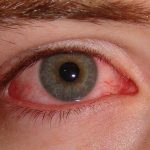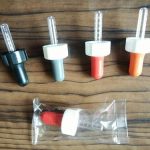Technavio Predicts Significant Growth in Assisted Reproductive Technology (ART) Market

According to the latest report by Technavio Research, the Assisted Reproductive Technology (ART) Market is poised for substantial growth, expecting an increase of USD 8.23 billion from 2022 to 2027. The market’s momentum is forecasted to progress at a Compound Annual Growth Rate (CAGR) of 5.79% during this period.
Key factors driving this growth include rising infertility rates and obesity-linked cases, propelling demand for various procedures such as In Vitro Fertilization (IVF), Artificial Insemination, and more.
Segmentation and Regional Impact
The market is segmented by application (fertility clinics, hospitals, and others), type (IVF and artificial insemination), and geography (Europe, North America, Asia, and the Rest of the World). Europe is estimated to contribute 32% to the global market growth during the forecast period. This growth is attributed to the increasing elderly population facing infertility issues, particularly due to declining egg quality, impacting couples’ ability to conceive. Noteworthy contributors to the regional market include Italy, the UK, Germany, France, and Spain.
Leading Companies in the ART Market
Technavio’s latest market research report, titled “Global Assisted Reproductive Technology Market 2023-2027,” features prominent companies in the industry. Some key players include Cook Group Inc., CRITEX GmbH, Cryolab Ltd., Esco Micro Pte. Ltd., Ferring BV, FUJIFILM Holdings Corp., Hamilton Thorne Ltd., IMV Technologies, Instituto Bernabeu SL, INVO Bioscience Inc., KITAZATO Corp., Merck KGaA, Monash IVF Group Ltd., Pantec Engineering AG, Smiths Group Plc, The Cooper Companies Inc., Virtus Health, Vitrolife AB, XiltriX International, and Genea Ltd.
Cook Group Inc., for instance, offers ART services through products like the MNC Benchtop incubator. To gain further insights into company profiles, readers are encouraged to access the complete report.
Segmentation Analysis – Fertility Clinics on the Rise
The fertility clinics segment is anticipated to witness significant growth during the forecast period. The global rise in infertility clinic success rates is identified as a major element impacting the influx of patients seeking infertility treatment. A thorough understanding of each segment’s contribution is provided in concise infographics and detailed descriptions, offering valuable insights for market participants.
Market Drivers and Trends
Key Driver: The ART market is flourishing due to rising infertility rates and obesity-linked cases. This surge in demand is boosting various procedures such as IVF, Gamete Intrafallopian Transfer (GIFT), Intracytoplasmic Sperm Injection (ICSI), and more, addressing the expanding needs of individuals seeking fertility solutions.
Leading Trend: An emerging trend in the ART market is the increase in single-parent families, driving demand for services like Egg Freezing, Sperm Freezing, Donor Egg, and more. This societal shift highlights the need for a wider spectrum of specialized reproductive services to cater to individuals opting for ART procedures to achieve parenthood independently.
Challenges in the ART Market
Despite the promising growth, the ART market faces challenges related to mitigating side effects linked to infertility treatments, including Surrogacy, Fertility Drugs, Assisted Hatching, and more. Managing and reducing the adverse impacts of these procedures requires continuous research and innovation to enhance treatment efficacy while minimizing potential risks for individuals seeking fertility solutions.
For a comprehensive analysis of the current market scenario, the latest trends, and drivers, interested parties are encouraged to access Technavio’s latest market research report titled “Global Assisted Reproductive Technology Market 2023-2027.”





